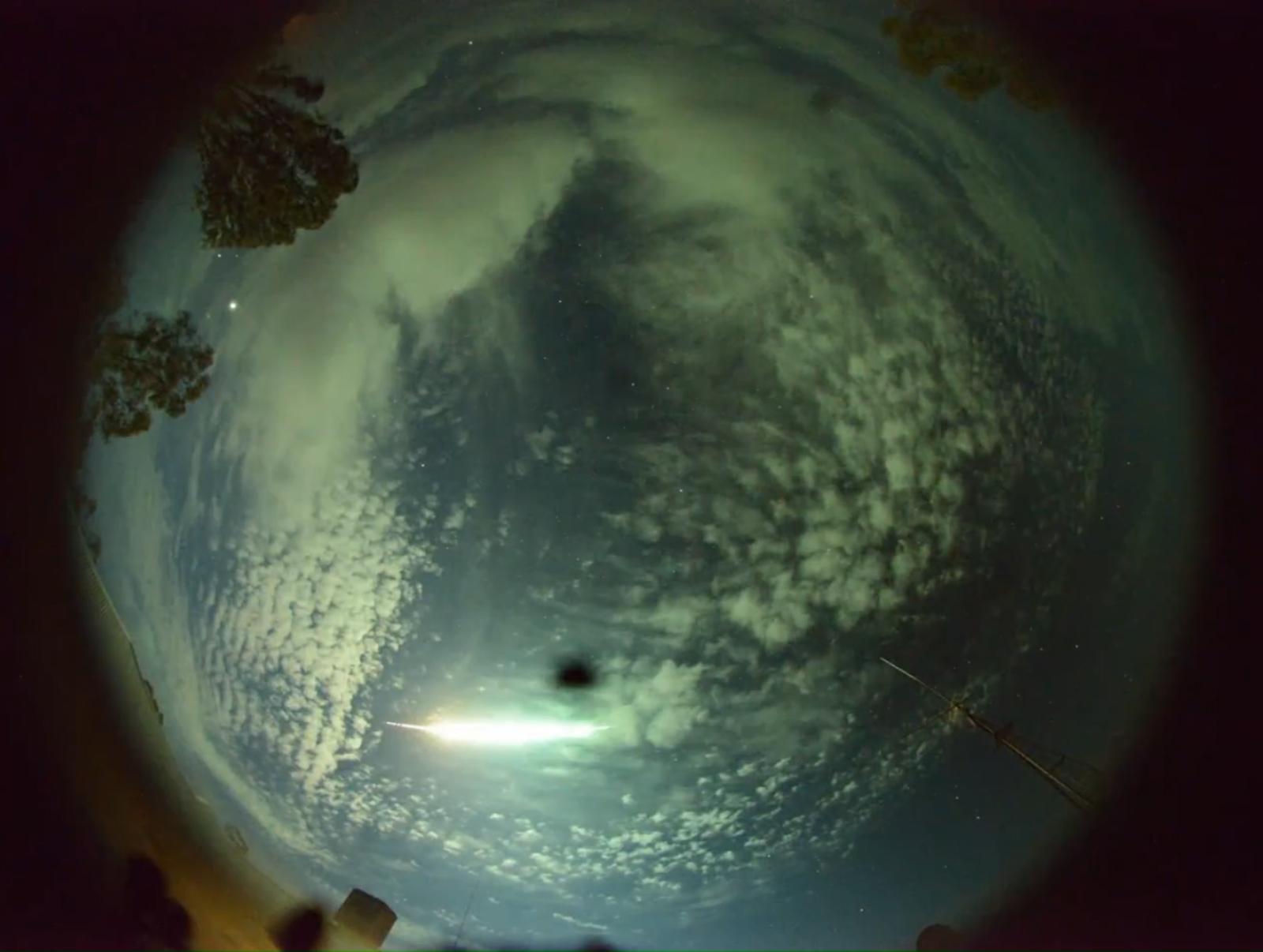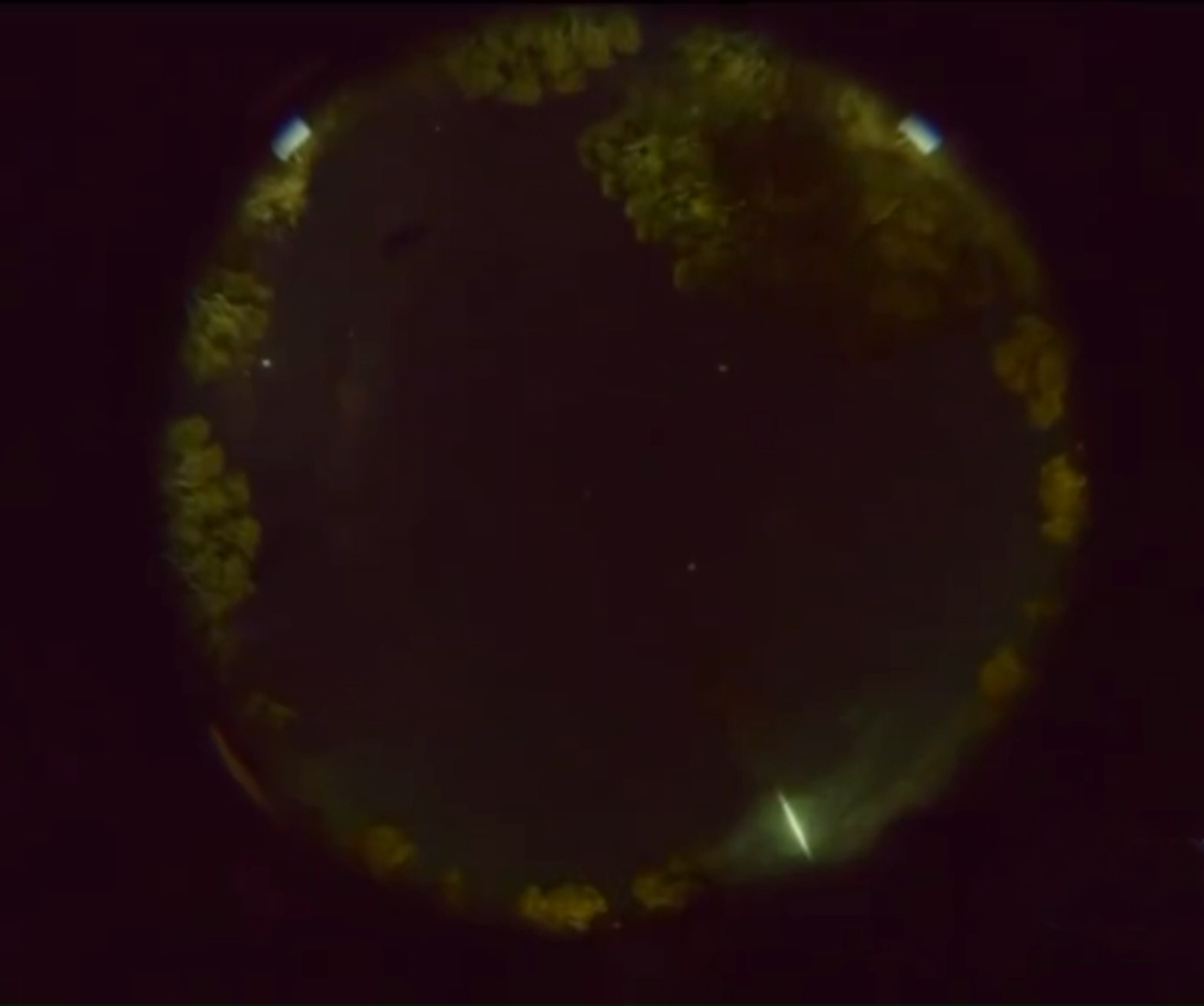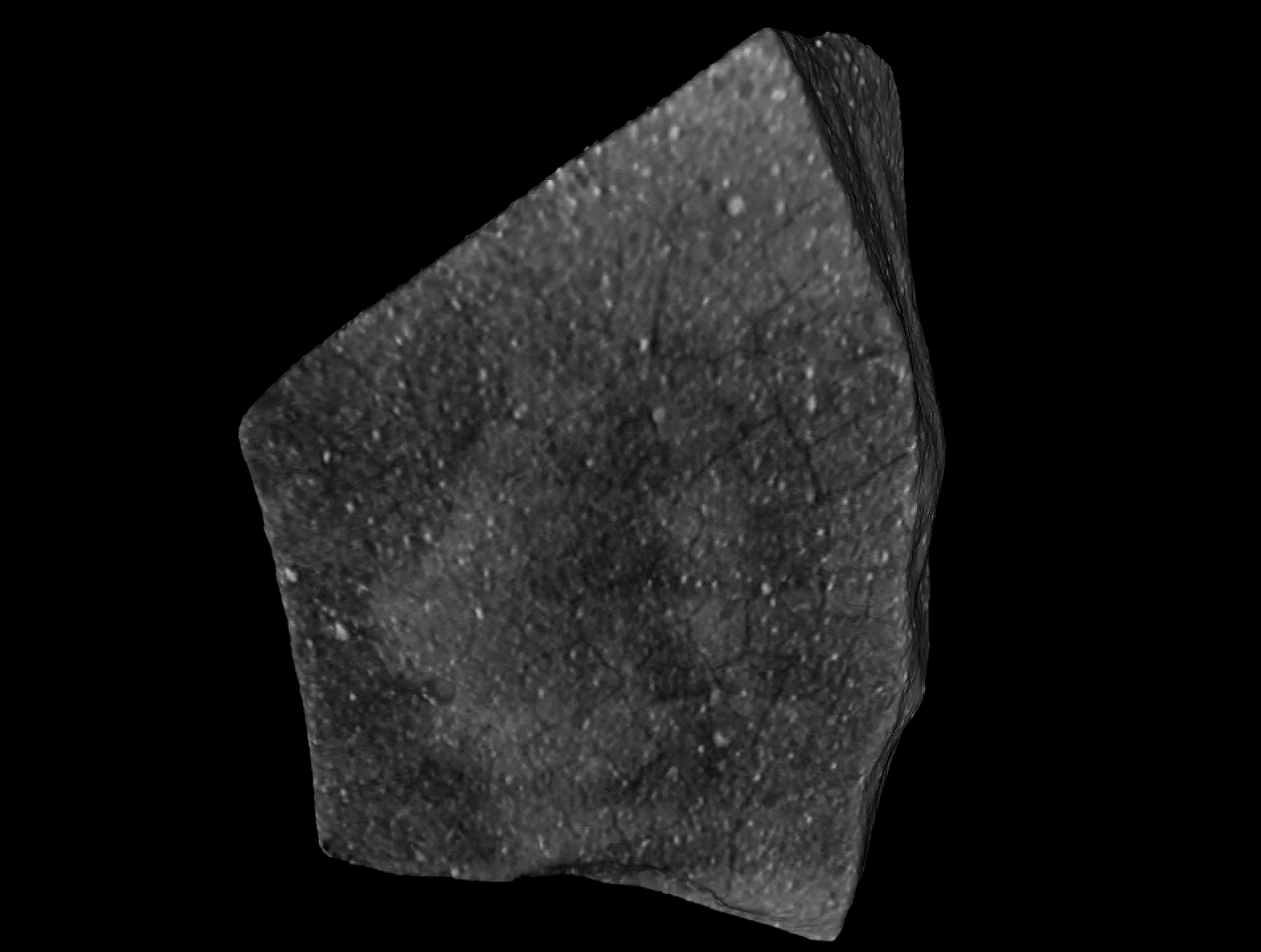DINGLE DELL (L/LL5, S2, W0) – 1.15-kg meteorite fall near Morawa, Western Australia on October 31, 2016 at 8.03.46 pm AWST (12.03.46 pm UTC)
Last update: 9 June 2017
On 31 October 2016 at 8.03.46 pm AWST (12.03.46 pm UTC) a bolide was seen above Western Australia, coming in from a north-northeastern direction. It was recorded entering the atmosphere at 80.4 km above the surface with a velocity of 15.43 km per second and, having decelerated to 3.54 km/s, ended its approximately 6.2-second luminous trajectory at a height of 19.53 km. The recorded luminous trail was 78 km long. The team of the Desert Fireball Network was initially informed about the bolide by four ‘citizen scientists’ and eyewitnesses, including Carol Redford. Redford had seen the bolide’s luminous trail in a northnortheastern direction from an estimated distance of approximately 240-280 km from her house’s lounge room window in Gingin. She used the ‘Fireball in the Sky’ smartphone app* to send her report to the DFN. The subsequent precise trajectory calculations made by the DFN team were mainly based on visual recordings of three Desert Fireball Network cameras (Perenjori*, Northam and Badgingarra) which had captured the bolide. Prof. Dr Martin Tower, Trent Jansen-Sturgeon, Ben Hartig and Hadrien Devillepoix of Curtin University went to the calculated fall area on 6 November to search the projected fall area.
On 2 November Prof. Phil Bland and Prof. Tower of Curtin’s Department of Applied Geology visited the fall area to ask for permission to search private farmland. On Monday, 7 November, at around noon the search team recovered a 1150.3-gram meteorite (~ 16 × 9 × 4 cm), an L/LL5 chondrite (S2, W0), at location 29°12’21.9″S 116°12’55.7″E on a paddock of the Dingle Dell farm, 19.98 km east of Morawa, Mid West, Western Australia. The meteorite is reported not to have left a visible impact pit on the ground. It was brought to Curtin University. The meteorite has been 3D CT-scanned at a location of the Commonwealth Scientific and Industrial Research Organisation (CSIRO). First information about the find were published on 17 November 2016 by the Geraldton Guardian*. On 21 November a Curtin University press release was published and the

Dingle Dell’s matrix revealed after the classification slab has been cut off. Photo: G.K. Benedix et al, MetSoc 2017, abstract 6229
meteorite was presen- ted to the media. The meteorite will be curated at the Department of Earth & Planetary Sciences, Western Australian Museum. Because of the meteoroid’s fragmentation events and the presence of secondary fusion crust on the found specimen it is assumed that other meteorite masses might have fallen in the area. Another recovery expedition has apparently been planned for early 2017. The DFN team apparently intends to wait until the wheat farmers have cut down the crops on their fields before starting another expedition.
[wc_row][wc_column size=”one-half” position=”first”] [/wc_column][wc_column size=”one-half” position=”last”]
Dingle Dell fall location near the edge of a paddock of the Dingle Dell farm, only a few meters from the Koolanooka Hills bush land.
[wc_row][wc_column size=”one-half” position=”first”] [/wc_column][wc_column size=”one-half” position=”last”] [/wc_column][/wc_row]

The bolide’s luminous trail captured by DFN’s Perenjori camera / Photo: Desert Fireball Network, Curtin University

The bolide’s luminous trail captured by DFN’s Badgingarra camera / Photo: Desert Fireball Network, Curtin University

The bolide’s luminous trail captured by DFN’s Northam South camera / Photo: Desert Fireball Network, Curtin University

Dingle Dell meteorite recovery team: Hadrien Devillepoix, Ben Hartig, Dr. Martin Towner, Trent Jansen-Sturgeon (left to right) / Photo: Curtin University
BBC Inside Science, 8 December 2016 (from 8.04 – 17.50 min run time)
AUDIO (MP3)
ABC NEWS, The World Today, 22 November, 3min 34sec
AUDIO (MP3)
Curtin University press release (21 November 2016)
Carol Redford’s Story (21 November 2016)
Geraldton Guardian (17 November, 9 pm)
Mineralogy, Petrology and Chronology of the Dingle Dell Meteorite
Benedix G. K. * Forman L. V. Daly L. Godel B. Esteban L. Meier M. M. M. Maden C. Busemann H. Yin Q.-Z. Sanborn M. Ziegler K. Friedrich J. M. Strasser J. W. Welten K. C. Caffee M. W. Glavin D. P. Dworkin J. P. Bland P. A. Paxman J. P. Towner M. C. Cupak M. Sansom E. K. Howie R. M. Devillepoix H. A. R. Cox M. A. Jansen-Sturgeon T. Hartig B. A. D. Bevan A. W. R.
80th Annual Meeting of the Meteoritical Society 2017 [#6229]
abstract (PDF)
Fall and Recovery of the Dingle Dell Meteorite
Devillepoix H. A. R. Bland P. A. Towner M. C. Sansom E. K. Howie R. M. Cupak M. Benedix G. K. Jansen-Sturgeon T. Hartig B. A. D. Cox M. A. Paxman J. P.
80th Annual Meeting of the Meteoritical Society 2017 [#6211]
abstract (PDF)
Dingle Dell Density and Other Physical Properties
Macke R. J. Benedix G. K. Bland P. A. Desert Fireball Network Team
80th Annual Meeting of the Meteoritical Society 2017 [#6197]
abstract (PDF)










































